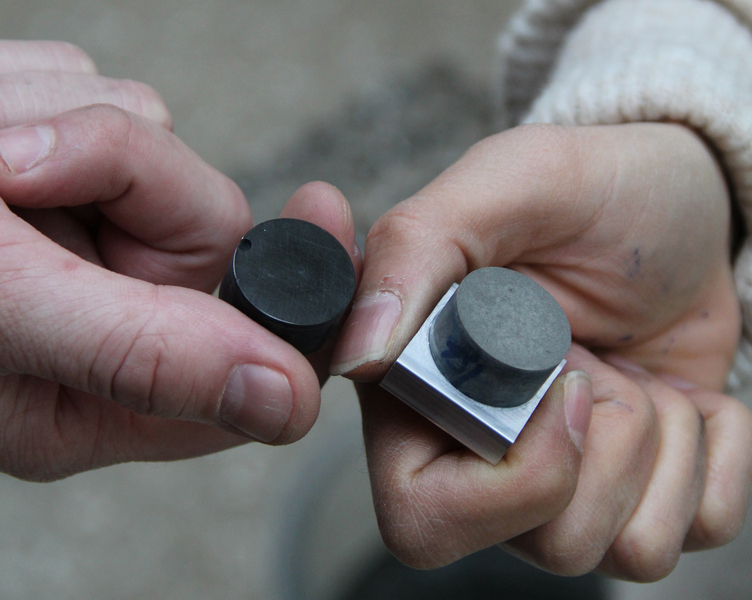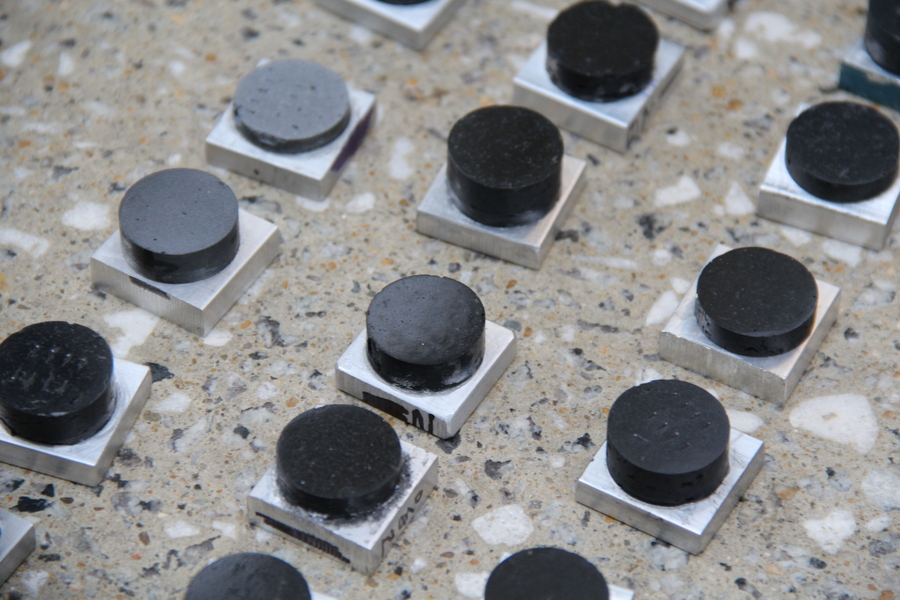Since its invention several millennia ago, concrete has become instrumental to the advancement of civilization, finding use in countless construction applications — from bridges to buildings. And yet, despite centuries of innovation, its function has remained primarily structural.
A multiyear effort by MIT Concrete Sustainability Hub (CSHub) researchers, in collaboration with the French National Center for Scientific Research (CNRS), has aimed to change that. Their collaboration promises to make concrete more sustainable by adding novel functionalities — namely, electron conductivity. Electron conductivity would permit the use of concrete for a variety of new applications, ranging from self-heating to energy storage.
Their approach relies on the controlled introduction of highly conductive nanocarbon materials into the cement mixture. In a paper in Physical Review Materials, they validate this approach while presenting the parameters that dictate the conductivity of the material.
Nancy Soliman, the paper’s lead author and a postdoc at the MIT CSHub, believes that this research has the potential to add an entirely new dimension to what is already a popular construction material.
“This is a first-order model of the conductive cement,” she explains. “And it will bring [the knowledge] needed to encourage the scale-up of these kinds of [multifunctional] materials.”
From the nanoscale to the state-of-the-art
Over the past several decades, nanocarbon materials have proliferated due to their unique combination of properties, chief among them conductivity. Scientists and engineers have previously proposed the development of materials that can impart conductivity to cement and concrete if incorporated within.
For this new work, Soliman wanted to ensure the nanocarbon material they selected was affordable enough to be produced at scale. She and her colleagues settled on nanocarbon black — a cheap carbon material with excellent conductivity. They found that their predictions of conductivity were borne out.
“Concrete is naturally an insulative material,” says Soliman, “But when we add nanocarbon black particles, it moves from being an insulator to a conductive material.”
By incorporating nanocarbon black at just a 4 percent volume of their mixtures, Soliman and her colleagues found that they could reach the percolation threshold, the point at which their samples could carry a current.
They noticed that this current also had an interesting upshot: It could generate heat. This is due to what’s known as the Joule effect.
“Joule heating (or resistive heating) is caused by interactions between the moving electrons and atoms in the conductor, explains Nicolas Chanut, a co-author on the paper and a postdoc at MIT CSHub. “The accelerated electrons in the electric field exchange kinetic energy each time they collide with an atom, inducing vibration of the atoms in the lattice, which manifests as heat and a rise of temperature in the material.”
In their experiments, they found that even a small voltage — as low as 5 volts — could increase the surface temperatures of their samples (approximately 5 cm3 in size) up to 41 degrees Celsius (around 100 degrees Fahrenheit). While a standard water heater might reach comparable temperatures, it’s important to consider how this material would be implemented when compared to conventional heating strategies.
“This technology could be ideal for radiant indoor floor heating,” explains Chanut. “Usually, indoor radiant heating is done by circulating heated water in pipes that run below the floor. But this system can be challenging to construct and maintain. When the cement itself becomes a heating element, however, the heating system becomes simpler to install and more reliable. Additionally, the cement offers more homogenous heat distribution due to the very good dispersion of the nanoparticles in the material.”
Nanocarbon cement could have various applications outdoors, as well. Chanut and Soliman believe that if implemented in concrete pavements, nanocarbon cement could mitigate durability, sustainability, and safety concerns. Much of those concerns stem from the use of salt for de-icing.
“In North America, we see lots of snow. To remove this snow from our roads requires the use of de-icing salts, which can damage the concrete, and contaminate groundwater,” notes Soliman. The heavy-duty trucks used to salt roads are also both heavy emitters and expensive to run.
By enabling radiant heating in pavements, nanocarbon cement could be used to de-ice pavements without road salt, potentially saving millions of dollars in repair and operations costs while remedying safety and environmental concerns. In certain applications where maintaining exceptional pavement conditions is paramount — such as airport runways — this technology could prove particularly advantageous.
Tangled wires
While this state-of-the-art cement offers elegant solutions to an array of problems, achieving multifunctionality posed a variety of technical challenges. For instance, without a way to align the nanoparticles into a functioning circuit — known as the volumetric wiring — within the cement, their conductivity would be impossible to exploit. To ensure an ideal volumetric wiring, researchers investigated a property known as tortuosity.
“Tortuosity is a concept we introduced by analogy from the field of diffusion,” explains Franz-Josef Ulm, a leader and co-author on the paper, a professor in the MIT Department of Civil and Environmental Engineering, and the faculty advisor at CSHub. “In the past, it has described how ions flow. In this work, we use it to describe the flow of electrons through the volumetric wire.”
Ulm explains tortuosity with the example of a car traveling between two points in a city. While the distance between those two points as the crow flies might be two miles, the actual distance driven could be greater due to the circuity of the streets.
The same is true for the electrons traveling through cement. The path they must take within the sample is always longer than the length of the sample itself. The degree to which that path is longer is the tortuosity.
Achieving the optimal tortuosity means balancing the quantity and dispersion of carbon. If the carbon is too heavily dispersed, the volumetric wiring will become sparse, leading to high tortuosity. Similarly, without enough carbon in the sample, the tortuosity will be too great to form a direct, efficient wiring with high conductivity.
Even adding large amounts of carbon could prove counterproductive. At a certain point conductivity will cease to improve and, in theory, would only increase costs if implemented at scale. As a result of these intricacies, they sought to optimize their mixes.
“We found that by fine-tuning the volume of carbon we can reach a tortuosity value of 2,” says Ulm. “This means the path the electrons take is only twice the length of the sample.”
Quantifying such properties was vital to Ulm and his colleagues. The goal of their recent paper was not just to prove that multifunctional cement was possible, but that it was also viable for mass production.
“The key point is that in order for an engineer to pick up things, they need a quantitative model,” explains Ulm. “Before you mix materials together, you want to be able to expect certain repeatable properties. That’s exactly what this paper outlines; it separates what is due to boundary conditions — [extraneous] environmental conditions — from really what is due to the fundamental mechanisms within the material.”
By isolating and quantifying these mechanisms, Soliman, Chanut, and Ulm hope to provide engineers with exactly what they need to implement multifunctional cement on a broader scale. The path they’ve charted is a promising one — and, thanks to their work, shouldn’t prove too tortuous.
The research was supported through the Concrete Sustainability Hub by the Portland Cement Association and the Ready Mixed Concrete Research and Education Foundation.











